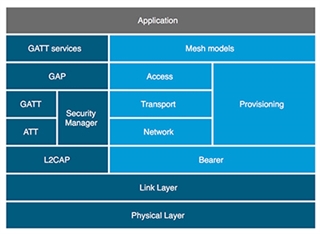hey
I have worked on BLE, and learned the BLE protocol stack. Now i am learning BLE Mesh. I found the Mesh is also having a stack, I could not understand why both the stacks are different even though Mesh uses BLE . Mesh Stack is having different layers like access, model, network, bearer etc. I couldn't understand how data is communicating through these layers, why there is much difference between BLE stack and mesh stack?



